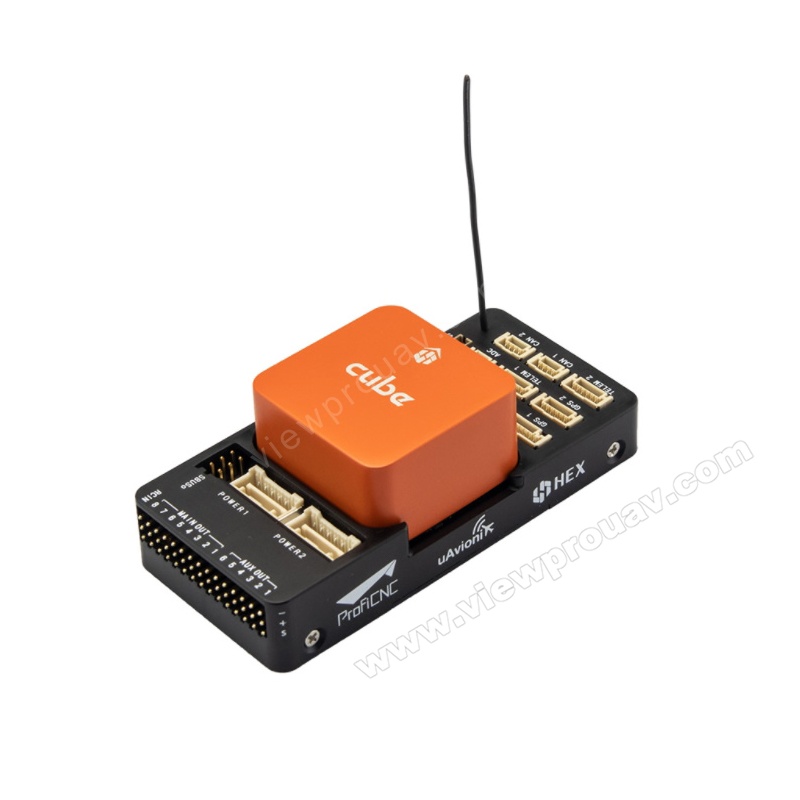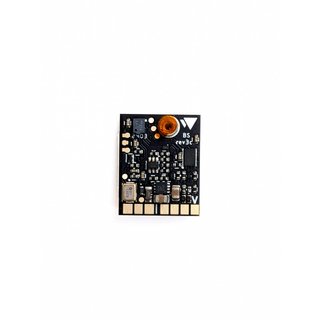SparkNavi Drone Flight Controller and GNSS/INS Made in Taiwan: Leading the Way in Drone Technology
SparkNavi Drone Flight Controller and GNSS/INS Made in Taiwan: Leading the Way in Drone Technology
Blog Article
Comprehending the Necessary Features and Functions of a Drone Flight Controller for Ideal Aerial Performance
The flight controller serves as the crucial component in a drone's architecture, orchestrating its activities and making certain security through a sophisticated interaction of sensing units and data handling. With innovations in modern technology, the landscape of trip controllers is rapidly progressing, motivating a more detailed exam of what absolutely specifies ideal functionality in this crucial system.
Introduction of Flight Controllers
When discovering the globe of drone modern technology, understanding trip controllers is important for both specialists and enthusiasts alike. Trip controllers function as the brain of the drone, orchestrating its activities and making sure stability throughout flight (SparkNavi drone flight controller and GNSS/INS made in taiwan). They process information from various sensing units, consisting of accelerometers, barometers, and gyroscopes, to maintain stability and reply to pilot inputs successfully
The architecture of flight controllers can differ considerably, varying from basic variations developed for entry-level drones to sophisticated systems equipped with innovative functions for professional applications. The assimilation of GPS abilities enables exact navigation and positioning, while programmable firmware allows individuals to tailor trip characteristics to suit their specific requirements.
Additionally, flight controllers are essential in helping with communication between the drone and the push-button control, enabling real-time adjustments and telemetry information transmission. Comprehending the different sorts of trip controllers, consisting of multi-rotor, fixed-wing, and hybrid systems, is critical for selecting the suitable design for a provided application. Eventually, an extensive grasp of flight controllers not only enhances the flying experience but additionally optimizes the performance and security of drone operations.
Trick Features of Trip Controllers
Flight controllers play an essential function in handling a drone's flight dynamics by implementing numerous crucial functions that make sure stability and responsiveness. One of the main features is the stabilization of the drone's positioning and elevation. This is attained via the assimilation of various sensors, consisting of accelerometers, barometers, and gyroscopes, which continuously keep track of the drone's position and movement.
.jpg)
An additional essential function is the handling of control inputs from the pilot or independent systems. The flight controller analyzes these inputs and readjusts the drone's motor speeds as necessary to attain the preferred trip course. This consists of handling roll, pitch, and yaw, which are crucial for maneuverability.
In addition, trip controllers are equipped with foolproof systems. These functions are developed to react to essential scenarios, such as low battery levels or loss of signal, by launching predefined actions like returning to the launch factor or hovering in place.

Essential Attributes to Think About
When picking a drone trip controller to make sure ideal performance and dependability,Many vital features should be taken right into account. One important aspect is the controller's handling power, which identifies its ability to handle complex flight formulas and real-time data handling. A greater processing ability enhances responsiveness and stability throughout trip.
One more essential attribute is the number of supported trip modes. A functional flight controller must provide various settings, consisting of acro, altitude hold, and GPS-assisted modes, catering to various pilot skill degrees and functional scenarios. In addition, the visibility of built-in safety and security functions, such as fail-safes and geofencing, can considerably boost operational safety.
Compatibility with numerous interaction protocols is additionally essential, as it Continue makes sure seamless assimilation with other tools and peripherals, such as remote controllers and telemetry systems. The controller's firmware need to be straightforward and routinely updated to include new functions and optimizations.
Assimilation With Sensing Units and Solutions
A flight controller's efficiency is greatly affected by its capacity to incorporate with different sensing units and systems. This integration is crucial as it allows the trip controller like it to obtain real-time information needed for reliable trip management. Secret sensing units consist of GPS, inertial dimension units (IMUs), barometers, and magnetometers, each giving essential information pertaining to the drone's setting, alignment, and elevation.

Additionally, advanced trip controllers sustain assimilation with payload systems, consisting of cameras and other sensing units, making it possible for improved capabilities such as autonomous navigating and barrier evasion. This interconnectedness not only enhances the drone's operational abilities yet additionally increases its application potential across various industries, from aerial digital photography to farming surveillance. Thus, a well-integrated flight controller is essential for accomplishing optimum airborne performance and making sure the integrity of drone operations.
Tips for Optimizing Efficiency
To optimize the performance of your drone, a number of crucial methods can be utilized that focus on optimizing both hardware and software parts. Ensure that the flight controller firmware is up to day.
Following, calibrate your sensing units, including the accelerometer and gyroscope, to make certain exact readings. Proper calibration minimizes drift and boosts trip stability, particularly during facility maneuvers. Furthermore, think about upgrading the hardware parts, such as motors and propellers, to enhance drive and performance. High-quality propellers can decrease drag and boost trip time.
Tweak your trip settings, including PID (Proportional, Integral, Acquired) worths, to achieve responsive and smooth handling. By applying these methods, drone operators can significantly boost aerial performance, leading to an extra pleasurable and reliable flying experience.
Final Thought
To conclude, a complete understanding of drone flight controllers is critical for improving aerial efficiency. The integration of important attributes and vital features, consisting of processing power and safety and security systems, directly affects the stability and ability to move of drones. Additionally, reliable communication with numerous sensors and my latest blog post systems plays an essential function in attaining accurate navigating and functional performance. By prioritizing these aspects, drivers can significantly elevate the performance and integrity of their drone systems in varied applications.
Flight controllers offer as the mind of the drone, managing its activities and making certain security during flight.Flight controllers play an essential function in taking care of a drone's trip dynamics by performing a number of vital features that guarantee security and responsiveness. The flight controller interprets these inputs and changes the drone's motor speeds appropriately to accomplish the preferred trip course.Countless crucial features should be taken into account when selecting a drone flight controller to make certain optimal performance and integrity. Therefore, a well-integrated flight controller is fundamental for accomplishing optimal aerial efficiency and guaranteeing the integrity of drone operations.
Report this page